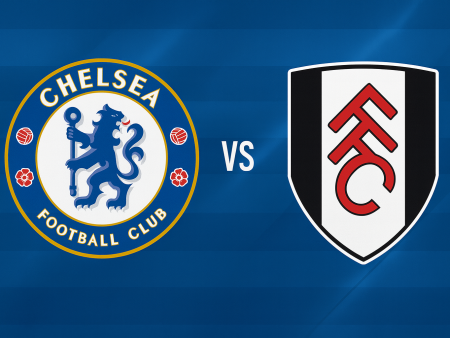Mastering the Art of Dismarking in Football: Movement, Timing, and Tactical Execution
Dismarking is a fundamental yet often overlooked aspect of football, referring to a player’s ability to shake off close marking from an opponent. Achieving this separation is crucial for effective attacking play and requires a blend of intelligent off-the-ball movement, timely execution, and a deep tactical understanding. This article explores the principles of dismarking, focusing on player movement, positional rotation, and effective receiving techniques.
The Essentials of Dismarking: Movement and Spatial Awareness
Success in dismarking begins with purposeful off-the-ball movement. Rather than gravitating toward the ball, players are more effective when they reposition themselves away from it, seeking out pockets of space that defenders are less likely to anticipate. This strategy grants the ball carrier more options and opens new attacking lanes.
Key principles for effective dismarking include:
– **Moving away from the ball:** Allows teammates to find or create passing angles and keeps defenders guessing.
– **Scanning the field:** Constant awareness of teammates, opponents, and available space informs the direction and timing of movement.
– **Adapting to pressure:** If the player with the ball is under immediate threat, nearby teammates need to close the gap quickly to provide a safe passing outlet.
– **Avoiding purposeless movement:** Players must move with intent, not simply run into space for the sake of movement.
Intelligent movement also exploits defenders’ reactions. When attackers make rapid, deceptive runs—especially as opposing defenders are drawn toward the ball—they increase the chances of losing their marker and becoming available for a pass.
Receiving Techniques that Outmaneuver Defenders
How a player receives the ball is just as critical as their movement. Elite players continuously scan their environment to judge how and where to take their first touch, adjusting their body position based on the defender’s location and momentum.
Some effective techniques include:
– **Shielding the ball:** When opposition pressure is from behind, keeping one’s body between the defender and the ball is vital.
– **Receiving on the half-turn:** If time and space permit, positioning the body to receive while already turning opens up opportunities to attack quickly.
– **Quick lay-offs and one-touch plays:** These are invaluable for maintaining tempo and exploiting spaces, especially when the player is facing their own goal or under heavy pressure.
– **Utilizing varied receiving methods:** Techniques such as using the front foot, outside of the boot, or even a touch through the legs can provide escape routes from tight marking.
Layoffs and fast combinations often trigger defensive reactions, inadvertently creating new areas of space that can be exploited by well-timed runs from supporting teammates.
Progressive Passing and Exploiting Defensive Blind Spots
A significant aspect of dismarking comes from a team’s passing choices. Progressive passes—those that advance play into dangerous areas—force defenders to adjust, often turning away from the player they are marking.
Recommendations include:
– **Diagonal switches to the wing:** When a long pass is played wide, defenders naturally shift across the field. Taking a positive first touch down the touchline gives the receiver more time and makes it difficult for the pressing defender to recover.
– **Targeting the space behind defenders:** When a player steps out to press, the space they’ve vacated directly behind becomes prime territory for an attacker to exploit.
– **Third-man runs:** Using a decoy or holding player in the central area, teams can create passing sequences that free up another attacker to receive the ball unmarked, often by exploiting the spaces created by defensive adjustments.
Organized teams, especially those that prioritize possession, often rely on powerful forward players to act as focal points—drawing defenders out of position with one-touch plays and then spinning in behind, capitalizing on the disruption.
Positional Rotation: Creating and Capitalizing on Space
Positional rotation is a strategic element widely used by top teams like Ajax, Manchester City, and Borussia Dortmund. The core idea is that when one player vacates a position—drawing their marker with them—a teammate seamlessly fills that space, often arriving unmarked.
The benefits of positional rotation include:
– **Disrupting defensive shape:** When attackers coordinate their movement and rotate positions, defenders are forced to make quick decisions—whether to follow their marker or maintain zonal responsibility.
– **Opening passing lanes:** As players rotate, new angles become available for forward passes or combinations.
– **Improving throw-in strategies:** Variability in movement during attacking throw-ins allows teams to find targets for quick progression and maintain attacking momentum.
Tips for successful rotations:
– **Opposite movements:** If two players find themselves in a similar lane, moving in divergent directions opens up central space, giving the ball carrier or another teammate a route to advance.
– **Timing:** The player in possession must wait for rotations to develop but act before defenders adjust, emphasizing field scanning and decision-making speed.
Team Structures and Tactical Patience in Possession
Teams that excel in dismarking typically maintain close player proximity, which encourages fluid rotations and quick passing combinations. For example, Manchester City’s approach involves playing in a 2-3-5 attack-ready shape. By patiently circulating the ball, they wait for defensive weaknesses before attempting incisive forward passes.
Key tactics include:
– **Creating overloads:** Clustering players centrally gives passing options but requires discipline and awareness to not overcrowd or hinder movement.
– **Triggering defensive shifts:** By baiting defenders into pressing, attackers create gaps to exploit with timed runs or passes.
– **Patience and scanning:** Rather than forcing risky passes, teams move defenders out of position until the right opportunity presents itself.
Conclusion: Elevating Attacking Play Through Dismarking Mastery
Dismarking is far more than just eluding a marker; it is a blend of movement, tactical intelligence, timing, and technical execution. By integrating these principles, players and teams can routinely create imbalances in opposition defenses, leading to higher-quality attacking chances.
In summary, effective dismarking relies on:
– Purposeful movement both away from and toward the ball when appropriate.
– Continuous scanning of the pitch for defenders, teammates, and space.
– Receiving techniques tailored to specific game situations.
– Tactical rotations and combinations that unsettle defenses.
By adopting these practices, footballers can significantly enhance their influence during games, consistently finding space in even the most disciplined defensive setups.








